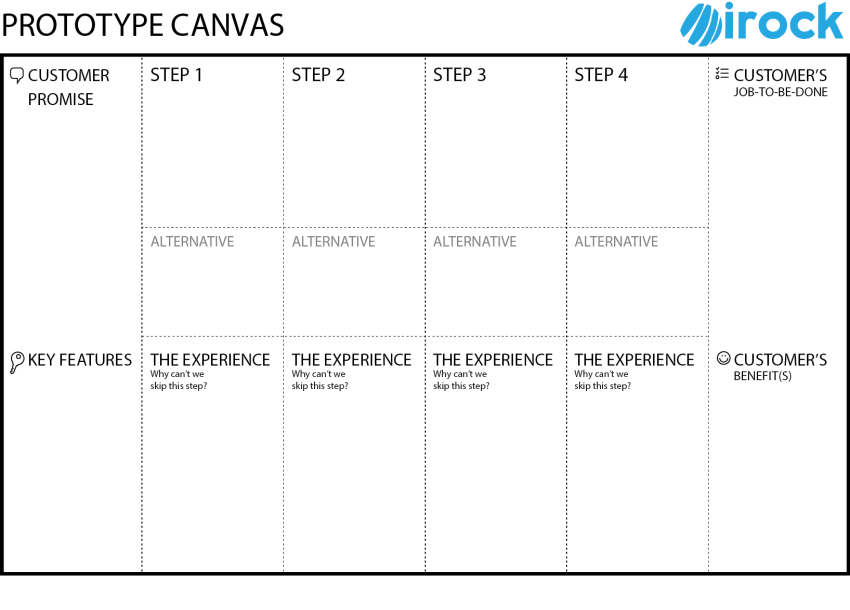Prototype Canvas
Simply put, prototyping is the art and science of faking it before making it, where “it” refers to an innovative product or service. Prototyping is used to make value propositions tangible and concrete. It helps you test a certain aspect of the product or service you have in mind. Needless to say, this is the perfect step to take after having filled in the business model canvas and/or the value proposition canvas.
Tool overview

How does the prototype canvas work?
Prototyping can be used in many phases of the design journey, with different purposes. It can be used to find out if something is technically feasible (an ‘engineering’ prototype), if your design ideas look and feel good, and satisfies design criteria, or if your ideas resonate with customers (a ‘validation’ prototype). We focus on the validation prototype for this canvas.
The (Digital) Prototype design sprint is typically part of the Validation phase. It can be used in strategy work as well as in training. It is a very energetic design sprint to get participants from theory into practice, from thinking to doing. You can also use it within the Innovation phase, to make the concepts more real.
State here who is your customer and what is the job to be done for this customer? Which job to be done is most relevant to be solved by this product or service? Copy this information from the Value Proposition Canvas.
What does the customer get out of it? When will customer will have a big smile on his/her face?
What part of the customer promise (from the Value Proposition Canvas) do you want to prototype with the product or service? What is your promise to your customer by using the product or service?
What are the key features and/or functionalities of the product or service? For example maybe the app even works with additional hardware that can be attached to your mobile devise. But focus on the minimum required features, prevent featuritis.
What are the minimal steps the customer needs to go through to reach the job to be done and the benefits? Could there be an alternative for a step? What is the experience per step for the customer? Do they really need this step or would it slow them down in reaching the goal in mind?

